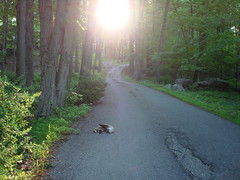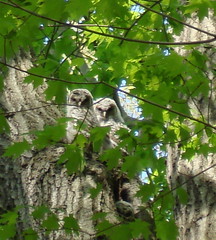The first time I read through the story in the current Audubon magazine about Long Island Sound, I thought it was OK – hardly inspired, nothing that people interested in the Sound don’t already know, but not a bad introduction for people who are new to the issues (you can find it here).
Then I read it again. While the story has most of its facts right, I found three that are wrong. And more importantly, whether some facts are right or wrong, it’s my impression that the author can’t quite decide what to make of them. The result is a story that is confusing at best. For example, the story says the Sound is:
… one of the most heavily used estuaries in the United States, pumping at least $5 billion into the region’s economy every year through power generation, recreation, commercial fishing, and shipping. But unlike, say, Chesapeake Bay, restoring Long Island Sound has yet to attract widespread popular support.
My minor criticism of the passage is that while the Sound does contribute more than $5 billion a year to the local economy, the study that came up with that figure (by UConn economist Marilyn Altobello, about 17 years ago) looked only at the businesses that need Long Island Sound to be clean. It was specifically a study of how the economy might be affected if the Sound were seriously contaminated. Power generation and shipping most definitely were not included and to say that they were is an error.
But my bigger criticism is of the assertion that restoring the Sound has yet to attract widespread popular support. The author provides no evidence for that and in fact, a few sentences later, seems to be saying the opposite:
Long Island Sound, though, does have its share of dedicated champions. In the early 1990s a coalition of environmental, industry, and labor representatives formed a campaign to reduce pollutants and restore the sound’s habitat. The unusual alliance caught the attention of Congress.
So, to review, the restoration of the Sound has no widespread support except that is has its share of dedicated champions, an unusual alliance representing often-opposing interests that managed to catch the attention of Congress.
Later, after the author asserts that there’s no widespread popular support, he (or she, I’m not sure whether Jesse Greenspan is a man or a woman) says:
... tenacious civic advocacy has combined with federal efforts to help reverse the sound’s ecological decline.
And then later:
...time is running out for the wildlife that relies on the sound for survival.
So there’s no widespread support for restoration but there’s an unusual alliance that caught the attention of Congress and there’s tenacious civic advocacy. Also the tenacious civic advocacy has helped reverse the Sound’s decline but time is running out. So which is it?
Elsewhere the story says, correctly:
… hypoxia remains a problem and reached near-record levels in 2003.
Yes but that was almost four years ago. What about more recent years? The area of hypoxia in the summer of 2006 was 28 times smaller than the average area from 1991 through 2005. That doesn’t mean the author is wrong about 2003. But it does mean there’s more to the story.
Another wrong fact:
Though the federal government has provided only about 5 percent of the hundreds of millions of dollars that have recently been poured into upgrading sewage-treatment plants, that money has been important to smaller communities, which can’t afford the improvements on their own.
No federal money has gone into sewage treatment plant improvements since Ronald Reagan was president. All of the cleanup money has come from the states, the counties and the local governments.
Another wrong fact:
In 1994, with the support of the states of New York and Connecticut, local and national environmental groups, various municipal representatives, sportfishing organizations, and marina owners, the EPA adopted a management plan that called for a 58.5 percent reduction in nitrogen by 2014.
Actually, they set the 58.5 goal in 1998, which you can read about here on the Long Island Sound Study website.
Read it yourself and make up your own mind. Audubon is an important magazine, with a good reputation. Too bad it did such a shoddy job this time.
(I should add that I did learn something from the article: it reports that David Miller is no longer the head of Audubon New York. Google informs me that a couple of months ago he became the Deputy Commissioner of Innovation and Chief if Staff at the state Department of Education.)
Labels: Audubon Magazine







